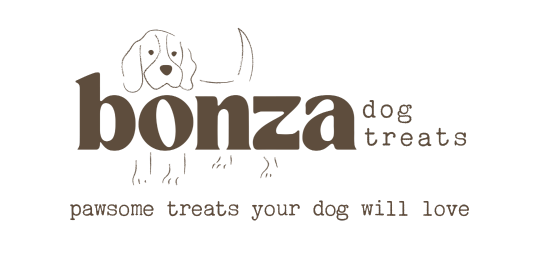Coming home to a destroyed shoe or chewed-up furniture is one of the most frustrating experiences for a dog owner. You might feel defeated, but take comfort: your dog isn't acting out of malice—they're satisfying a deep, natural instinct. The problem isn't the chewing itself; it's what they’re choosing to chew.
This isn't just another list of tips. This is your complete, Australian-specific guide to turning destructive habits into healthy ones. We'll show you how to properly diagnose the root cause, dog-proof your environment, provide the right enrichment, and implement effective training—all without confusing or punishing your beloved pet. Say goodbye to ruined possessions and hello to a happy, focused dog.
Step 1 : Diagnosing the Root Cause
The key to stopping destructive chewing is understanding why your dog is doing it. You can't solve an anxiety problem with a toy designed for boredom. Chewing is a form of communication, and by observing when and what your dog chews, you can usually diagnose the root cause.
Cause A: Teething and Exploration (Ages 3-6 Months)
If you have a young puppy, their chewing is primarily driven by discomfort and exploration. They are losing baby teeth and their mouth hurts, so chewing provides relief. This type of chewing is often non-discriminatory—they’ll chew furniture, hands, and toys—and is generally directed at soothing inflammation.
Cause B: Boredom and Energy Overflow
The most common cause in older puppies and young adults. This behaviour often happens when you are at home but preoccupied (e.g., watching TV, working). The chewing is the dog's way of creating their own fun because their physical and mental energy needs aren't being met. They might target cushions, rugs, or random household items in a casual, drawn-out way.
Cause C: Anxiety (Separation or Confinement)
This is the most serious cause. Chewing due to anxiety typically occurs only when the dog is left alone. The destruction is usually focused on exit points like door frames, window sills, or the crate bars as they desperately try to escape. If the chewing is frantic and accompanied by barking, pacing, or house soiling when you're gone, anxiety is the likely culprit.
Cause D: Nutritional or Mineral Gaps
In rare cases, excessive chewing of non-food items (like dirt, rocks, or plaster) can point to a condition called Pica. If you suspect your dog's diet is unbalanced, or if the chewing targets specific unusual items, a trip to the vet is necessary to rule out any underlying health or nutritional deficiencies.
Step 2 :The Environmental Fix: Dog-Proofing Your Home
Once you’ve identified the underlying cause of the chewing, your next step is to control the environment. Training is vital, but managing the temptation is the quickest way to break the cycle of destruction. You can't train a dog not to chew a shoe that's right under their nose!
Puppy-Proofing vs. Adult-Dog Proofing
Think like a toddler proofing a house:
-
Remove the Targets: Keep high-value temptations like shoes, remote controls, cables, and magazines completely out of reach. If you can’t put an item away, close the door to that room or use baby gates to limit access.
-
The "One Strike" Rule: If your dog chews an item once, it must be removed from the environment immediately. Every time your dog practices the wrong behaviour, it reinforces the bad habit.
Creating a Safe "Chew Zone" or Den
When you can’t actively supervise your dog (even if you are just making a cup of tea), confinement becomes a necessary and positive management tool.
-
Define Their Space: Use a crate, exercise pen, or a secured laundry room as a temporary "Chew Zone." This area should only contain safe, appropriate chew items and water.
-
Associate it with Positive Things: The Chew Zone must never be used for punishment. Only allow access to high-value chews (like a stuffed Kong) inside this area. This teaches your dog that being in their zone is rewarding and comfortable.
Using Taste Aversion Safely
For objects you cannot move—like wooden chair legs, skirting boards, or walls—taste deterrents can be a helpful, temporary aid. Apply a non-toxic, pet-safe bitter spray to these targets. The foul taste provides immediate negative feedback without the dog associating the punishment with you. However, deterrents only work if you simultaneously provide a much more appealing, appropriate item to chew.
Step 3 : Enrichment: Satisfying the Instinct
Chewing is self-rewarding for a dog; it releases endorphins, relieves stress, and keeps them mentally engaged. Your goal now is to make appropriate chew items so incredibly appealing that your dog chooses them over your lounge suite. This involves strategy, variety, and rotation.
The Chew Toy Hierarchy: Matching Toy to Chewer Profile
Not all chewers are created equal. Providing the wrong type of toy can lead to frustration (if it breaks too easily) or disinterest (if it's not satisfying).
| Chewer Profile | Ideal Toys/Treats | What to Avoid |
| Aggressive/Power | Hard rubber (Kong Extreme), durable nylon bones, Himalayan dog chews, goat horn. | Ropes, soft plush toys, thin plastic. |
| Moderate/Exploratory | Rope toys, puzzle toys, softer nylon, natural deer antlers. | Easily ingested materials. |
| Puppy/Teether | Soft rubber (frozen), cold washcloths, pliable plastic toys. | Anything too hard that could damage baby teeth. |
Edible Chews: A Focus on Australian Favourites
Edible chews are fantastic because they provide a high-value, high-satisfaction outcome. In the Australian market, you have access to excellent, natural options:
-
Goat Horn: A popular, low-fat, and long-lasting choice for persistent chewers.
-
Bully Sticks (Pizzles): Highly digestible and extremely motivating.
-
Dried Shark Skin Strips: Offer a novel texture and are excellent for dental health.
Crucial Tip: Always supervise your dog with any new edible chew and ensure it is sized appropriately to prevent choking hazards.
The Power of Food Puzzles and Frozen Enrichment
Chewing isn't just physical; it's mental. Food-stuffed toys turn chewing into a "job." Use frozen ingredients like peanut butter (xylitol-free!), dog-safe yoghurt, or blended broth inside a West Paw Toppl to provide 30-60 minutes of focused, positive chewing time. These are essential tools for dogs suffering from boredom-related chewing.
Step 4 : Training, Exercise, and Consistency
Management (Step 2) and enrichment (Step 3) are your immediate solutions, but consistency in training is what guarantees long-term success. Your dog needs clear, reliable rules that are applied by every member of the household.
The Essential "Redirect and Reward" Technique
This is the most effective training method: it teaches your dog what is allowed without relying on fear or punishment.
-
Interrupt Gently: If you catch your dog chewing something inappropriate, do not yell or chase them. Simply make a neutral, interrupting noise (like a soft "Ah-ah!") or clap your hands once.
-
Redirect: Immediately guide them to an appropriate, high-value chew toy or stuffed Kong (Step 3).
-
Reward: The second your dog puts their mouth on the correct item, praise them enthusiastically ("Good chew!") or offer a small treat.
This teaches them: "If I chew the remote, nothing happens. If I chew my toy, I get praise and a treat."
Physical Exercise vs. Mental Exercise
A tired dog is a good dog, but a mentally stimulated dog is even better. Many destructive chewers have plenty of physical exercise but zero mental work.
-
Physical: Ensure your dog gets a minimum of two structured walks or play sessions daily.
-
Mental: Incorporate scent work (hiding treats around the house), short trick-training sessions, or regular puzzle feeder use. Twenty minutes of mental work can be as exhausting as an hour-long walk.
When to Call a Professional Trainer (Warning Signs)
If the destructive chewing is accompanied by frantic pacing, excessive drooling, or sustained barking when left alone, it is a clinical case of Separation Anxiety. This is not a training issue; it is a clinical condition. At this point, you should consult a certified veterinarian or a qualified, positive-reinforcement dog behaviourist for professional guidance and potential medication to help your dog cope.




